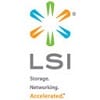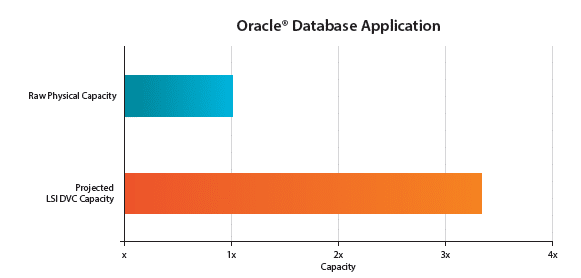
LSI SandForce is announcing its DuraWrite Virtual Capacity (DVC) which is a unique SandForce flash controller feature that extends the available storage capacity for data beyond the physical capacity of the underlying flash memory. Utilizing a compression algorithm, DVC can extend the capacity of an SSD by more than 3x the physical size of the drive. By increasing storage capacity for the same physical flash memory, DVC reduces the cost per gigabyte of delivered capacity. The total increased capacity provided by DVC will vary based on the compressibility of the data itself. DVC provides a SMART attribute to enable applications to control and monitor the remaining free physical space and manage the amount of valid data to ensure proper performance and behavior of the SSD storage.
LSI SandForce is also announcing that its SF-2000 flash controllers now support Toshiba’s second generation advanced 19nm NAND flash memory (A19nm), allowing SSD manufacturers to produce more affordable SSD products. On top of that, they are providing more information about LSI SHIELD, which is an implementation of low-density parity-check (LDPC) code and digital signal processing (DSP) that is in next-generation SandForce flash controllers. This technology provides the following advantages over typical LDPC types of ECC:
- Adaptive code rate dynamically balances performance and reliability over the life of the SSD
- Smart handling of transient noise reduces overall LDPC latency for improved ECC efficiency
- Both hard-decision and soft-decision LDPC coding provides a multi-level ECC schema that applies stronger levels of ECC to minimize latency while maintaining optimal flash performance
The frequency of read errors varies across blocks of any NAND flash memory chip, and the number of ECC bytes increases over time as a block ages and generates more errors. SHIELD technology delivers optimum reliability with minimal overhead by implementing a variable code rate per block that provides stronger ECC for weak blocks and weaker ECC for strong blocks. At the beginning of life (BOL) of the flash, unused ECC space is automatically converted to additional over provisioning (OP) space. As the SSD approaches its end of life (EOL), part of the OP is gradually consumed to enable a much stronger ECC beyond the spare area reserved by the flash manufacturer.
These innovations increase SSD endurance without requiring an early commitment to a large ECC overhead, which would reduce the overall performance of the SSD. Thus, manufacturers can optimize for higher performance solutions with confidence that SHIELD technology will ensure data integrity throughout the life of the product.


